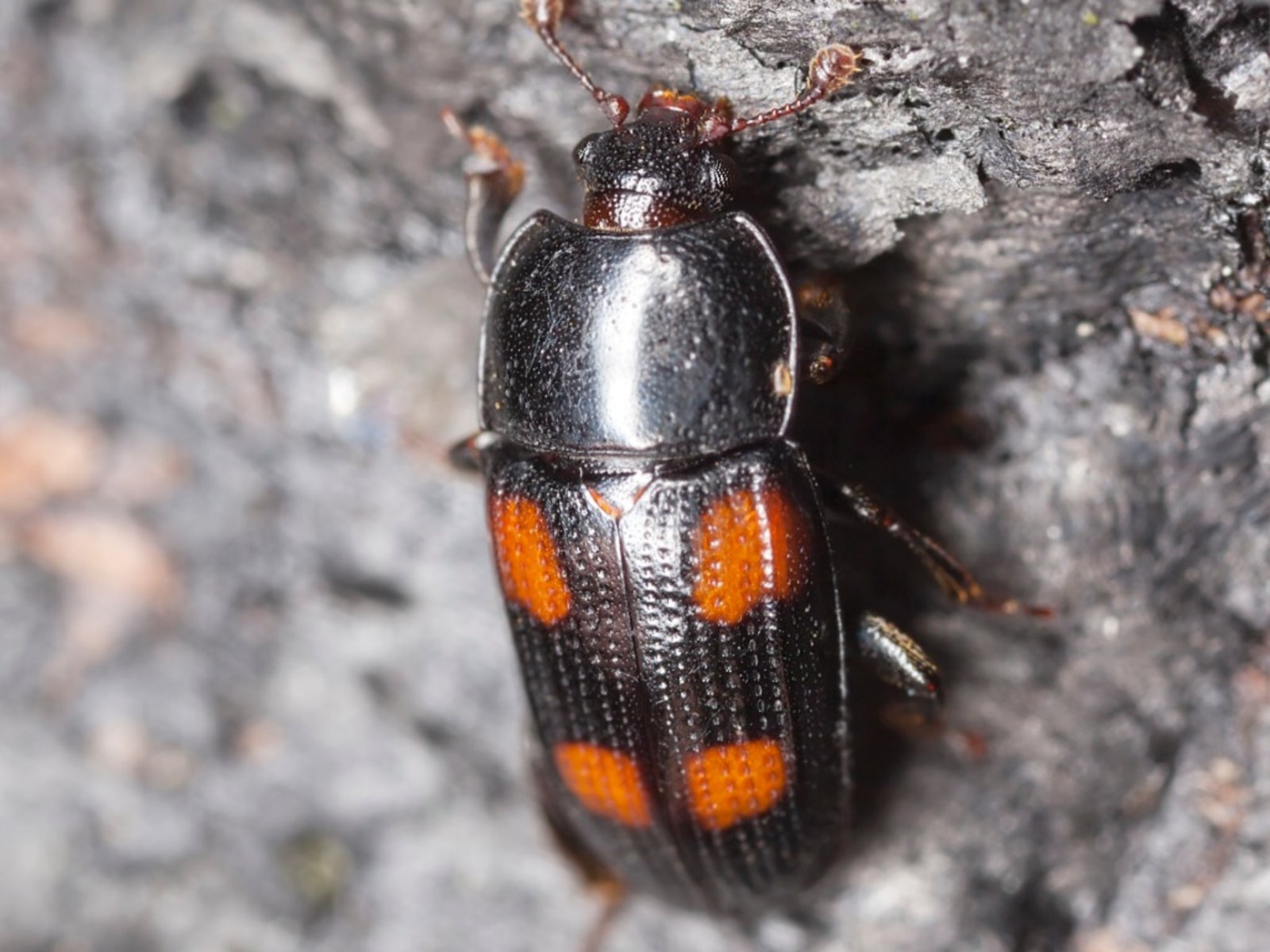What Are Sap Beetles: How To Control Sap Beetles


Sap beetles are extremely dangerous pests of commercial and home fruit crops. What are sap beetles? They are small beetles present in many crops, including corn and tomatoes. The insects bore into ripe or damaged fruits and their larvae live inside. Here are some tips on how to control sap beetles and prevent their destructive eating habits from destroying your fruit.
What are Sap Beetles?
Sap beetles are also known as picnic beetles. There are several species with the largest only ¼ inch (0.5 cm.) long. These tiny insects hide in winter and emerge when temperatures warm in spring. The hard carapace is oval to oblong and either mottled brown or black. The easiest way to distinguish sap beetles from other beetles is their club-shaped antennae. You will see the insects in rotting vegetation, under fruit trees where overripe fruit drops, and even compost bins. Although they are small, the insects' feeding activities can wreak havoc on commercial operations where perfect fruit is an important commodity. The home grower usually doesn't mind a few holes, but be warned. Sap beetles also lay tiny eggs inside the fruit - which hatch. Larval feeding activity isn't as obvious, but the presence of the eggs inside the fruit may be a turn-off. Sap beetle damage mars the appearance of the fruit and they may also get into tree wounds, which is unhealthy for the plant. Sap beetle control cannot commence until the appearance of the insects, which isn't until the fruit has ripened, but you can minimize their presence by some simple maintenance.
What Plants are at Risk?
Sap beetles on plants usually are spotted towards the end of the growing season. Their feeding habits are usually confined to rotting or already damaged fruit and vegetables but occasionally they will attack healthy produce. The most commonly affected plants are tomatoes, sweet corn, muskmelon, stone fruit and pommes, and berries. Sap beetle damage will render the food unsuitable for human consumption, but you can still use it as animal feed.
How to Control Sap Beetles
The first step in any control is prevention. Pick up ripe or diseased fruit from the ground to keep the juices and fecund odor from attracting the beetles. Harvest food as it becomes ready. Sap beetle control with pesticides is not usually effective since the pests don't appear until you are about ready to pick the fruit. Carbaryl and Bifenthrin have been shown to prevent some sap beetles on plants but only in heavy infestations. Trapping or baiting is another method of chemical warfare. Choose food that the beetles particularly like, such as banana or melon. You can also use vinegar, stale beer or molasses, water, or yeast mixture. Apply a little bit of Malthion or another effective pesticide to the food item. Change the bait every 3 to 4 days and keep it out of the reach of pets and children.
Gardening tips, videos, info and more delivered right to your inbox!
Sign up for the Gardening Know How newsletter today and receive a free copy of our e-book "How to Grow Delicious Tomatoes".

Bonnie Grant is a professional landscaper with a Certification in Urban Gardening. She has been gardening and writing for 15 years. A former professional chef, she has a passion for edible landscaping.
-
 Looking For Plants To Give You The Soft And Fuzzies? Try These 5 Fuzzy Leaf Plant Options
Looking For Plants To Give You The Soft And Fuzzies? Try These 5 Fuzzy Leaf Plant OptionsLovers of texture, drama, silver foliage and tactile plants will adore these special sensory garden additions. These fuzzy leaf plant options will leave you all aglow
By Susan Albert
-
 Get Ready For A Summer Of Hummers! Grow These Full Sun Hummingbird Plants and Flowers
Get Ready For A Summer Of Hummers! Grow These Full Sun Hummingbird Plants and FlowersIf you’re lucky enough to enjoy a sunny backyard, make sure you are maxing out on your pollinator opportunities and grow these full sun hummingbird plants and flowers
By Tonya Barnett